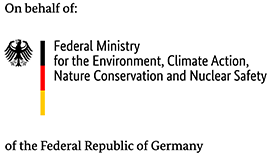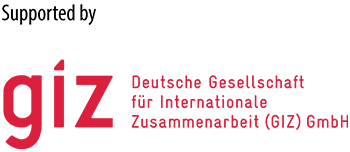Energy Efficient Cooling
July-September | 2024Bilateral
Mitigation of Climate Change
Link To Project: Click Here
Project Updates
District Cooling for Energy Conservation in Urban Habitats.
Blue is the New Green! GIZ’s IKI funded Energy Efficient Cooling Project supported the first ASHRAE Region XV Chapters’ Regional Conference as knowledge partner on district cooling from 20-22 September in Udaipur.
As global urbanisation accelerates, the energy-water nexus - the critical link between energy production and water management - has become a central sustainability challenge. The 3-day event focused on the intersection of energy conservation and urban sustainability. District Cooling systems thereby offer a promising solution, cutting energy and water consumption by up to 40% compared to traditional methods, and when paired with renewable energy sources, the environmental benefits multiply.
During the GIZ-hosted panel discussion, ‘Innovative Approaches to District Cooling for Urban Habitats’, experts emphasised the need for collaboration among key stakeholders and supportive policies to scale district cooling technology for broader adoption. Nitin Jain, Project Head for Energy Efficiency at GIZ India, underscored GIZ's commitment to working with the Bureau of Energy Efficiency (BEE) to develop strategies aimed at reducing the energy intensity of urban cooling districts. Piyush Sharma, Energy Advisor at GIZ drew attention to the upcoming District Cooling Hub which is currently developed together with BEE and UN Environment Programme and will serve as a One Stop Centre on district cooling in India.
The American Society of Heating, Refrigerating and Air-Conditioning Engineers (ASHRAE) is a global society committed to advancing human well-being through sustainable technology for the built environment. Focussed on advancing the arts and sciences of heating, ventilation, air conditioning and ASHRAE India Chapter plays a key role in shaping the future of the Indian industry. Their members form a network of diverse stakeholders.
Regional Workshop on Cooling India’s Cities held on 26th September 2024 in Amaravati, Andhra Pradesh
Cooling is a critical priority for Andhra Pradesh, which experiences the highest number of heatwave days in South India. Solutions such as District Cooling, which centralise the production and distribution of cooling energy, offer a transformative systems approach. District Cooling Systems (DCS) promote energy efficiency and conservation, enable the substitution of fossil fuels with renewable energy, and integrate with other technologies like Sewage Treatment Plants and Waste-to-Energy facilities, creating circular systems that reduce resource wastage and environmental impact.
The Regional Workshop convened stakeholders from across Andhra Pradesh to explore the implementation of DCS, particularly in the planned capital city of Amaravati, which could attract significant district cooling investments. Notably, 30% of the participants were women, underscoring the importance of diverse perspectives and paving the way for more female representation in advancing energy efficiency and district cooling solutions. The workshop was part of the MoU between Tabreed India and GIZ’s Energy Efficiency Cooling programme, jointly implemented with the Bureau of Energy Efficiency under the Ministry of Power and funded by BMWK through IKI.
While engaged discussions covered needed policies at both central and state levels, business models, funding, and standardisation processes to foster market growth for DCS, a major highlight was the launch of the report "Andhra Pradesh’s $5 Billion Energy Transition - Investment Opportunity through District Cooling," which outlines the potential of DCS for the state and its circular approach to urban cooling. Under the leadership of Andhra Pradesh’s Hon. Chief Minister, the state – through the Andhra Pradesh Capital Region Development Authority (APCRDA) – signed India’s first Public-Private Partnership concession with Tabreed in 2019. This agreement targets the development of a 20,000 RT District Cooling System for Amaravati’s government complex, aiming to reduce cooling energy demand by 50%. Scaling this model across high-density areas could unlock $4 billion in investments, reduce power demand by 1.8 GW, and cut carbon emissions by 2.6 million tonnes.
Copyright © 2025 All rights reserved




